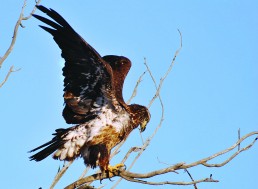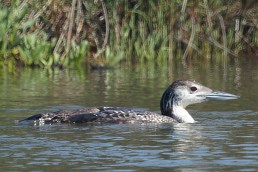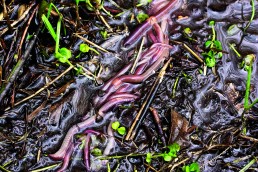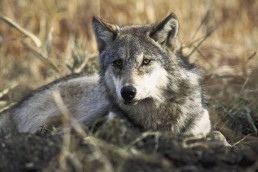Golden Eagles, Sturgeons, & the Elusive Midwestern Cactus
SHARE THIS POST
Big-cat diary
About 10,000 years ago, our backyards were a vastly different landscape, home to famous animals known as the “megafauna.” Surprisingly, one of the most fearsome of these was the saber-toothed cat, found here in the Midwest. Smilodon fatalis weighed as much as 620 pounds. It used its larger size to kill large prey, especially camels and bison.
It wasn’t until 1869 that the first saber-toothed cat fossil was found in North America. The fossil was part of the jawbone, and with just that one piece, Joseph Leidy was able to describe this new species. Eventually, large numbers of fossils were found in tar pits located in California. Although these big, exotic cats are gone, it’s still fascinating to think they roamed right through your neighborhood.
The Midwestern cactus
Leafy vegetation and prairie cover the Midwest, but in certain corners you can find desert-like flora, such as cactus. 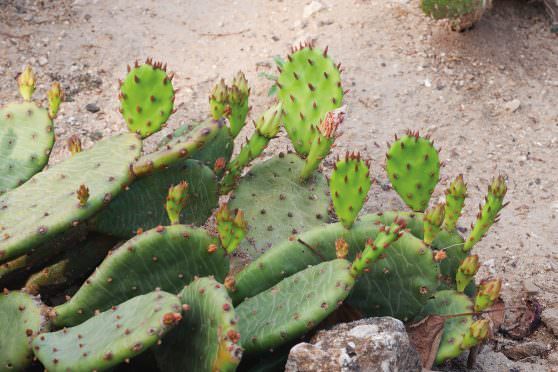 The most widespread is the eastern prickly pear, a cactus found in dry and well-drained soil. Shade is a killer to the prickly pear, which is why it grows in hot and dry conditions. Their range spans from Montana down to New Mexico, east to Florida, and finally up to New England. In early summer, this cactus produces a yellow flower. While this flower may not be edible, other parts of it are, including the pad. This pad can also be removed and buried if you want to try cultivating your own cactus colony.
The most widespread is the eastern prickly pear, a cactus found in dry and well-drained soil. Shade is a killer to the prickly pear, which is why it grows in hot and dry conditions. Their range spans from Montana down to New Mexico, east to Florida, and finally up to New England. In early summer, this cactus produces a yellow flower. While this flower may not be edible, other parts of it are, including the pad. This pad can also be removed and buried if you want to try cultivating your own cactus colony.
Ancient-looking fish recovering their numbers
While the landscape and biota has changed, some species have remained largely the same. The pallid sturgeon is one. The pallid sturgeon was declared an endangered species in 1990, and has had extensive help in trying to recover its population. Numerous fish hatcheries are breeding pallid sturgeon to be released into the wild. Many of their spawning grounds no longer exist today, due to construction of dams that have blocked spawning migrations. 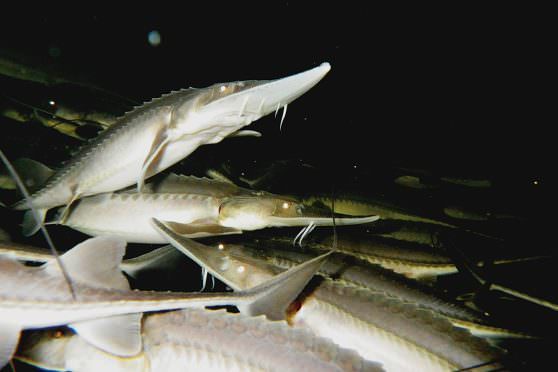 Not too long ago pallid sturgeon were considered a common species, and frequently caught by anglers.
Not too long ago pallid sturgeon were considered a common species, and frequently caught by anglers.
They can weigh up to 85 pounds and grow 60 inches. Pallid sturgeon have an ancient appearance and look similar to shovelnose sturgeon, but are significantly larger. It’s rare to see one. They can be found in the Dakotas, Iowa, Missouri and Illinois, and even there they can only be seen in the Missouri River until it connects to the Mississippi. While pallid sturgeon may never be as common as they once were, it appears these fish will continue to live in our waterways for years to come.
Killer pet?
Invasive species such as Burmese pythons, Asian carp and snakehead seem to get all the limelight, while others affecting our ecosystems get little publicity. An invasive creature that has caused 33 native species to go extinct may be in your own neighborhood. The house cat is an animal that’s invasive everywhere it lives. These cats prey heavily on native species and can throw localized food webs completely out of balance. The typical house cat is a descendant of a species of feline native to Africa that was domesticated around 12,000 years ago. Similar to dogs, different breeds of cats were created, leaving those newer breeds not native to a particular location. Every time a cat kills something, even as simple as a mouse, they are removing prey for native predators, such as birds of prey or snakes or others. Also, not only are feral cats harmful to native ecosystems, they often succumb to disease, starvation and other fatal incidents. It may be hard to believe your own friendly feline is capable of such heathenism, but they are.
Are you enjoying this post?
You can be among the first to get the latest info on where to go, what to use and how to use it!
Takes an eagle eye to spot differences
Birds of prey can be challenging to identify. Even iconic species like the bald eagle are difficult to recognize in their younger years, especially when it does not have that famous white head of feathers grown in. A bald eagle should not be ruled out, as a young one can be almost identical to a golden eagle if you don’t know what to look for. Visual differences in an immature bald eagle versus any golden eagle start with feather patterns. Immature bald eagles are mostly black with white flecking. The amount of flecking varies, some having a balanced black and white while some have almost none.
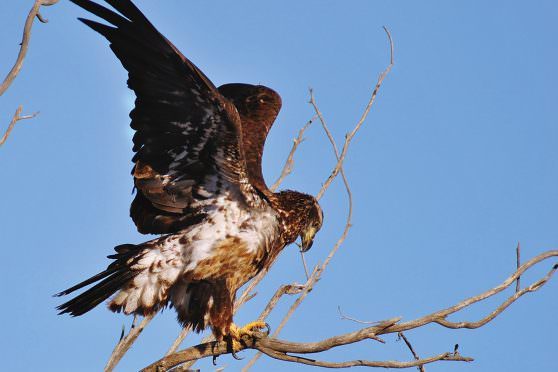
Golden eagles are more of a uniform brown, and will never have flecking. Also, the talons of a golden eagle have feathers that go all the way down to the ends, whereas a bald eagle has bald talons. Both species are truly amazing, but knowing exactly which you are observing near or from afar makes that moment a little more meaningful. Bald eagles are almost always seen nearer to water too, while golden eagles utilize a wide range of habitats. Bald eagles also build nests in larger trees near the water and golden eagles tend to build theirs on high cliffs.
Regional habitat pride
In the more southeastern portions of the Midwest, there is a truly unique, rich habitat not familiar to many. Glade habitat is this type, and is where bedrock is exposed or where hardly any topsoil is present. The unique features of this habitat allow for some different biota, and some that can only be found in these glades. Plant species found here have adapted to dry and harsh conditions, as these areas can be desert-like. And some rare plants can be only found from within. Birders are frequent visitors to these, since bird biodiversity can be exceptional and contain certain uncommon species. Eastern collared lizards bask on the glade’s large exposed rock. Work is now being done to restore these habitats because glades have been used as rock quarries and grazing lands and have degraded over the years. We have recognized how import these ecosystems are, and how dependent wildlife is on these habitats.
MWO
SHARE THIS POST
Did you enjoy this post?
You can be among the first to get the latest info on where to go, what to use and how to use it!
Calvin Vick
MidWest Outdoors’ “Nature Notes” columnist Calvin Vick is an undergraduate studying biology, with an emphasis on herpetology, at the University of Central Arkansas. His primary interests are venomous snakes and salamanders. He spends most of his free time photographing the two.
